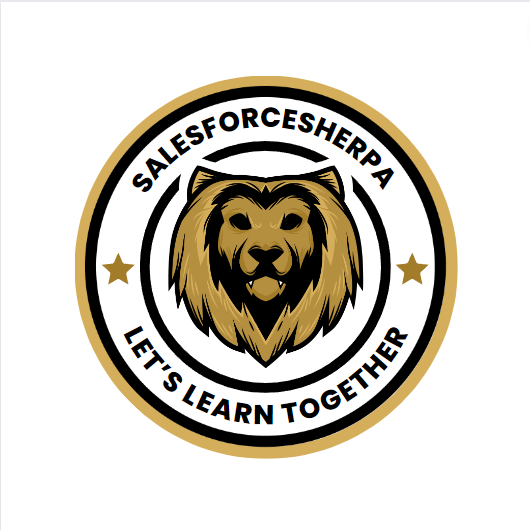Query Five Levels of Parent-to-Child Relationships in SOQL Queries
 SalesforceSherpa
SalesforceSherpa
If you're a developer working with Salesforce, you're likely familiar with the powerful SOQL (Salesforce Object Query Language) tool. SOQL enables you to retrieve data from Salesforce's various objects, including parent and child objects. In this article, we'll explore the process of querying five levels of parent-to-child relationships in SOQL queries.
Understanding Parent-to-Child Relationships
First, let's briefly review parent-to-child relationships in Salesforce. A parent object is an object that has one or more related child objects. For example, the Account object is a parent object, and the Contact and Opportunity objects are child objects related to Account. Each child object can have its own related child objects, creating a hierarchy of parent-to-child relationships.
Query Child-to-Parent Relationships
Query child-to-parent relationships, which are often many-to-one, using the dot (.) operator. Specify these relationships directly in the SELECT, FROM, or WHERE clauses.
SELECT Id, Name, Account.Name
FROM Contact
WHERE Account.Industry = 'media'
This query returns the ID and name for only the contacts whose related account industry is media, and for each contact returned, the account name.
Querying a Single Level of Parent-to-Child Relationship
Before we dive into querying five levels of parent-to-child relationships, let's review querying a single level of parent-to-child relationship. This will serve as a foundation for our more complex queries.
To query a single level of parent-to-child relationship, you use the dot notation in SOQL. For example, to retrieve all of the contacts related to a specific account, you would use the following query:
SELECT Id, Name, (SELECT Id, FirstName, LastName FROM Contacts) FROM Account WHERE Id = '001XXXXXXXXXXXXXXX'
In this query, the subquery (SELECT Id, FirstName, LastName FROM Contacts) retrieves all of the related contacts for the account with the specified ID.
Querying Multiple Levels of Parent-to-Child Relationships
Now, let's explore how to query multiple levels of parent-to-child relationships. To query multiple levels, you simply add additional subqueries using the dot notation.
For example, suppose you want to retrieve all of the opportunities related to the contacts related to a specific account. You would use the following query::
SELECT Id, Name, (SELECT Id, FirstName, LastName, (SELECT Id, Name FROM Opportunities) FROM Contacts) FROM Account WHERE Id = '001XXXXXXXXXXXXXXX'
In this query, the subquery (SELECT Id, FirstName, LastName, (SELECT Id, Name FROM Opportunities) FROM Contacts) retrieves all of the related contacts for the account, and for each contact, it retrieves all of the related opportunities.
Querying Five Levels of Parent-to-Child Relationships
Finally, let's tackle the challenge of querying five levels of parent-to-child relationships. The process is essentially the same as querying multiple levels but with additional subqueries.
This example SOQL relationship query returns records from the parent object Account and its child objects Contacts, Assets, WorkOrders, and WorkOrderLineItems.
SELECT Name,
(SELECT LastName,
(SELECT AssetLevel,
(SELECT Description,
(SELECT LineItemNumber FROM WorkOrderLineItems)
FROM WorkOrders)
FROM Assets)
FROM Contacts)
FROM Account
If you include a WHERE clause in a subquery, the clause filters on any object in the current scope that is reachable from the parent root of the query, via the parent relationships.
This example query returns the name for all accounts whose industry is media. For each account returned, returns the last name of every contact whose created-by alias is 'x.'
SELECT Name,
(
SELECT LastName
FROM Contacts
WHERE CreatedBy.Alias = 'x')
FROM Account WHERE Industry = 'media'
Traverse Relationship Queries
Here are some examples of relationship queries that traverse both parent-to-child and child-to-parent relationships.
This example query returns the name of all the accounts in an organization, and for each account, the name of the user who created each note for the account. If there were no notes for the account, the result set is empty.
SELECT Name,
(
SELECT CreatedBy.Name
FROM Notes
)
FROM Account
Another example query that traverses parent-to-child and child-to-parent relationships.
SELECT Amount, Id, Name, (SELECT Quantity, ListPrice,
PriceBookEntry.UnitPrice, PricebookEntry.Name,
PricebookEntry.product2.Family FROM OpportunityLineItems)
FROM Opportunity
Conclusion
To sum up, utilizing five levels of parent-to-child relationships in SOQL queries is a valuable resource for developers who are working with Salesforce. By incorporating subqueries with dot notation, one can extract data from intricate hierarchies of associated objects. It's important to exercise caution when querying large volumes of data since it can adversely affect performance. Keep exploring the capabilities of Salesforce and experimenting with SOQL queries
Subscribe to my newsletter
Read articles from SalesforceSherpa directly inside your inbox. Subscribe to the newsletter, and don't miss out.
Written by
